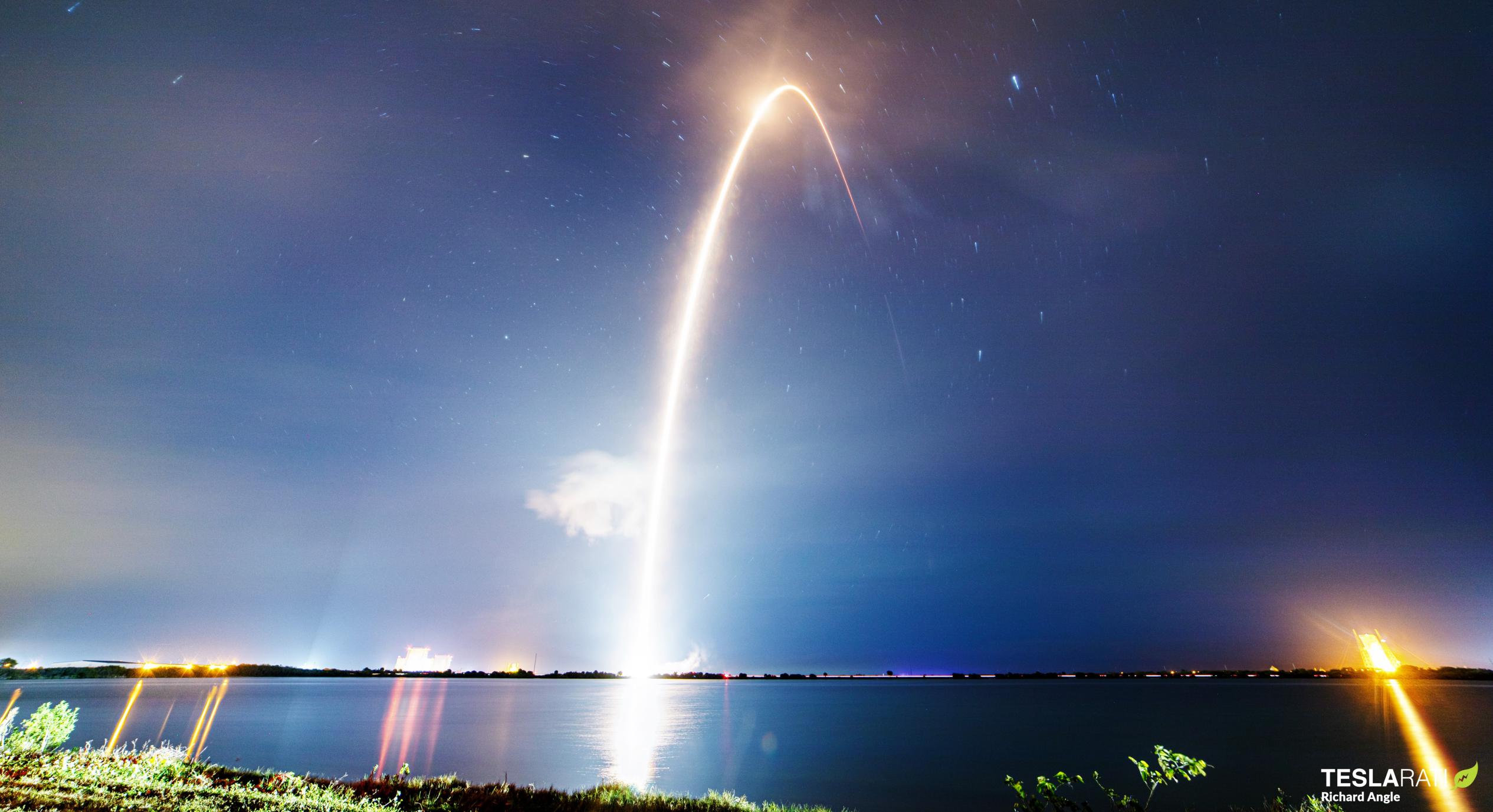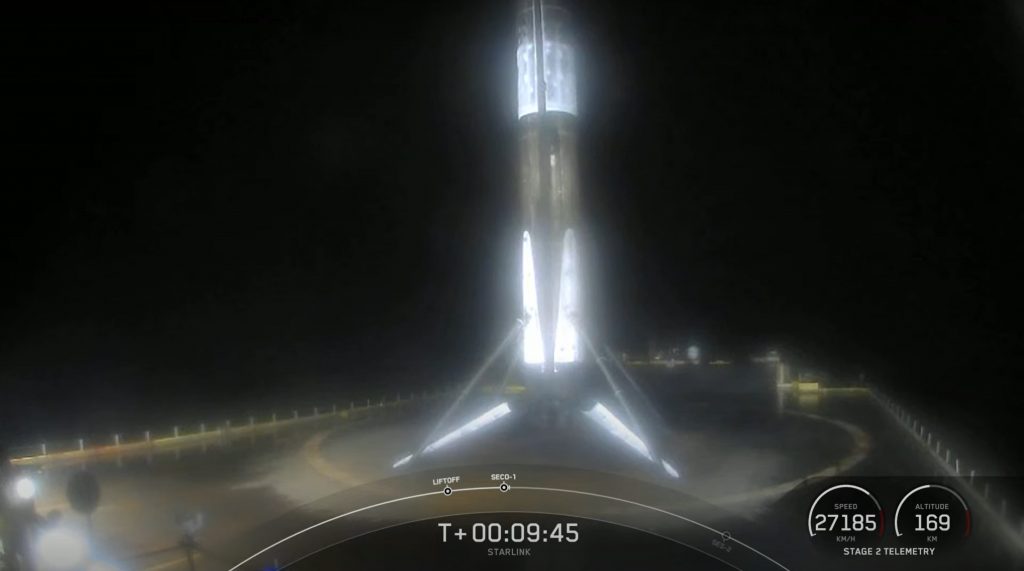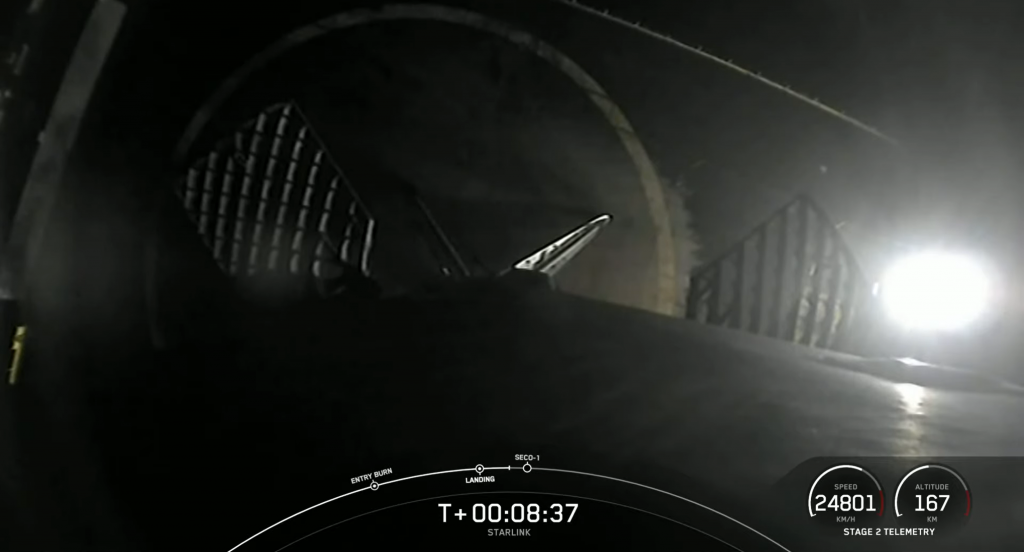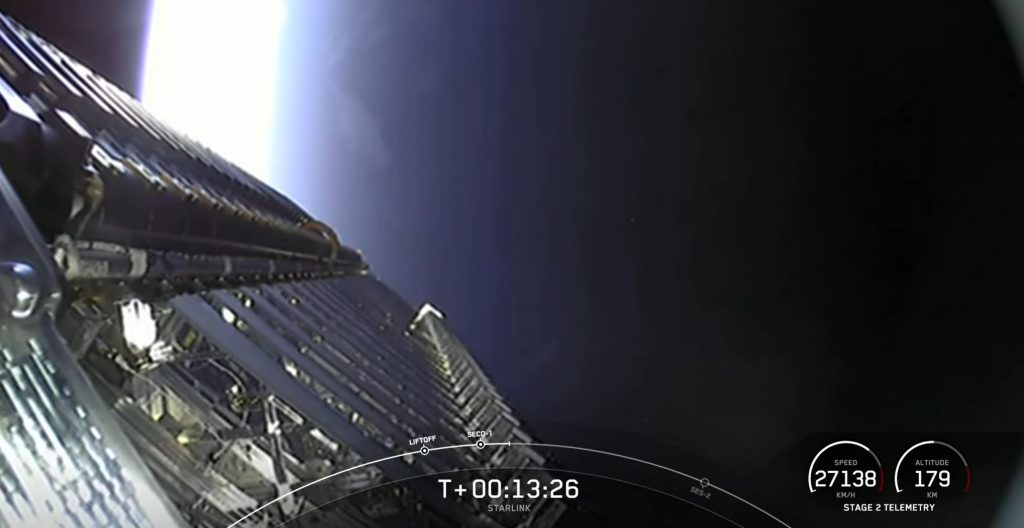

News
SpaceX aces ninth rocket launch, eighth landing this year
Like clockwork, SpaceX has successfully launched yet another batch of 60 Starlink satellites into low Earth orbit, racking up the company’s ninth launch (and eighth rocket landing) this year.
Set to be SpaceX’s last (orbital) launch this quarter, Starlink V1 L22’s success leaves it on track for an impressive 36 launches this year if the company can repeat the feat thrice over. That would be a third short of an ambitious 48-launch target but still smash the 26-launch record SpaceX set just last year by almost 40%.
Supporting its sixth orbital-class launch and landing in less than nine months, Falcon 9 booster B1060 sailed through boost phase, reentry, and descent without issue before sticking the landing on drone ship Of Course I Still Love You (OCISLY). Notably, every single orbital SpaceX launch this year – Starlink-22 included – has used a flight-proven booster and the first launch of a new booster is unlikely to happen before the second half of 2021.


Including a batch of 10 of the first polar Starlink satellites – also bearing space-laser prototypes – flown on a commercial rideshare mission earlier this year, Starlink-22 is technically SpaceX’s 23rd operational Starlink launch and 24th Starlink launch overall. Completed in 22 months, including all 23 operational missions in just 16 months, those two-dozen launches have delivered nearly 1400 broadband satellites to LEO.
Excluding 62 prototype Starlink satellites, 12 of which are still in orbit, less than 2% of the 1322 operational spacecraft launched have suffered some kind of issue, while a little over 1% have deorbited and burned up in Earth’s atmosphere. Assuming the Starlink-22 batch continues the positive trend, that failure rate has dropped as low as ~0.6% for the last ~890 satellites launched.

Aside from continuing what looks set to be another halcyon year of launches and Starlink milestones, Starlink-22 was also SpaceX’s fourth launch this month, making March 2021 its second four-launch month ever. That cadence – a bit less than one launch per week – is exactly what SpaceX would need to maintain to achieve the ambitious 48-launch target set by CEO Elon Musk last year.
SpaceX achieved its first four-launch month in November 2020 and repeating the feat just four months later is a strong sign that routine weekly launches are well within reach as operational efficiency continues to improve. Of all orbital rockets in history, just a few of which reached similar operational peaks sometime last century, Falcon 9 is the first in decades to get anywhere close to an annual cadence of 30-40+ launches.
SpaceX’s next launch (unsurprisingly a Starlink mission) is expected sometime in early April, followed by at least another one or two more Starlink missions before the focus shifts to Crew-2 – Crew Dragon’s third astronaut launch – around the second half of the month.

News
Tesla FSD fleet is nearing 7 billion total miles, including 2.5 billion city miles
As can be seen on Tesla’s official FSD webpage, vehicles equipped with the system have now navigated over 6.99 billion miles.

Tesla’s Full Self-Driving (Supervised) fleet is closing in on almost 7 billion total miles driven, as per data posted by the company on its official FSD webpage.
These figures hint at the massive scale of data fueling Tesla’s rapid FSD improvements, which have been quite notable as of late.
FSD mileage milestones
As can be seen on Tesla’s official FSD webpage, vehicles equipped with the system have now navigated over 6.99 billion miles. Tesla owner and avid FSD tester Whole Mars Catalog also shared a screenshot indicating that from the nearly 7 billion miles traveled by the FSD fleet, more than 2.5 billion miles were driven inside cities.
City miles are particularly valuable for complex urban scenarios like unprotected turns, pedestrian interactions, and traffic lights. This is also the difference-maker for FSD, as only complex solutions, such as Waymo’s self-driving taxis, operate similarly on inner-city streets. And even then, incidents such as the San Francisco blackouts have proven challenging for sensor-rich vehicles like Waymos.
Tesla’s data edge
Tesla has a number of advantages in the autonomous vehicle sector, one of which is the size of its fleet and the number of vehicles training FSD on real-world roads. Tesla’s nearly 7 billion FSD miles then allow the company to roll out updates that make its vehicles behave like they are being driven by experienced drivers, even if they are operating on their own.
So notable are Tesla’s improvements to FSD that NVIDIA Director of Robotics Jim Fan, after experiencing FSD v14, noted that the system is the first AI that passes what he described as a “Physical Turing Test.”
“Despite knowing exactly how robot learning works, I still find it magical watching the steering wheel turn by itself. First it feels surreal, next it becomes routine. Then, like the smartphone, taking it away actively hurts. This is how humanity gets rewired and glued to god-like technologies,” Fan wrote in a post on X.
News
Tesla starts showing how FSD will change lives in Europe
Local officials tested the system on narrow country roads and were impressed by FSD’s smooth, human-like driving, with some calling the service a game-changer for everyday life in areas that are far from urban centers.

Tesla has launched Europe’s first public shuttle service using Full Self-Driving (Supervised) in the rural Eifelkreis Bitburg-Prüm region of Germany, demonstrating how the technology can restore independence and mobility for people who struggle with limited transport options.
Local officials tested the system on narrow country roads and were impressed by FSD’s smooth, human-like driving, with some calling the service a game-changer for everyday life in areas that are far from urban centers.
Officials see real impact on rural residents
Arzfeld Mayor Johannes Kuhl and District Administrator Andreas Kruppert personally tested the Tesla shuttle service. This allowed them to see just how well FSD navigated winding lanes and rural roads confidently. Kruppert said, “Autonomous driving sounds like science fiction to many, but we simply see here that it works totally well in rural regions too.” Kuhl, for his part, also noted that FSD “feels like a very experienced driver.”
The pilot complements the area’s “Citizen Bus” program, which provides on-demand rides for elderly residents who can no longer drive themselves. Tesla Europe shared a video of a demonstration of the service, highlighting how FSD gives people their freedom back, even in places where public transport is not as prevalent.
What the Ministry for Economic Affairs and Transport says
Rhineland-Palatinate’s Minister Daniela Schmitt supported the project, praising the collaboration that made this “first of its kind in Europe” possible. As per the ministry, the rural rollout for the service shows FSD’s potential beyond major cities, and it delivers tangible benefits like grocery runs, doctor visits, and social connections for isolated residents.
“Reliable and flexible mobility is especially vital in rural areas. With the launch of a shuttle service using self-driving vehicles (FSD supervised) by Tesla in the Eifelkreis Bitburg-Prüm, an innovative pilot project is now getting underway that complements local community bus services. It is the first project of its kind in Europe.
“The result is a real gain for rural mobility: greater accessibility, more flexibility and tangible benefits for everyday life. A strong signal for innovation, cooperation and future-oriented mobility beyond urban centers,” the ministry wrote in a LinkedIn post.
News
Tesla China quietly posts Robotaxi-related job listing
Tesla China is currently seeking a Low Voltage Electrical Engineer to work on circuit board design for the company’s autonomous vehicles.

Tesla has posted a new job listing in Shanghai explicitly tied to its Robotaxi program, fueling speculation that the company is preparing to launch its dedicated autonomous ride-hailing service in China.
As noted in the listing, Tesla China is currently seeking a Low Voltage Electrical Engineer to work on circuit board design for the company’s autonomous vehicles.
Robotaxi-specific role
The listing, which was shared on social media platform X by industry watcher @tslaming, suggested that Tesla China is looking to fill the role urgently. The job listing itself specifically mentions that the person hired for the role will be working on the Low Voltage Hardware team, which would design the circuit boards that would serve as the nervous system of the Robotaxi.
Key tasks for the role, as indicated in the job listing, include collaboration with PCB layout, firmware, mechanical, program management, and validation teams, among other responsibilities. The role is based in Shanghai.
China Robotaxi launch
China represents a massive potential market for robotaxis, with its dense urban centers and supportive policies in select cities. Tesla has limited permission to roll out FSD in the country, though despite this, its vehicles have been hailed as among the best in the market when it comes to autonomous features. So far, at least, it appears that China supports Tesla’s FSD and Robotaxi rollout.
This was hinted at in November, when Tesla brought the Cybercab to the 8th China International Import Expo (CIIE) in Shanghai, marking the first time that the autonomous two-seater was brought to the Asia-Pacific region. The vehicle, despite not having a release date in China, received a significant amount of interest among the event’s attendees.








